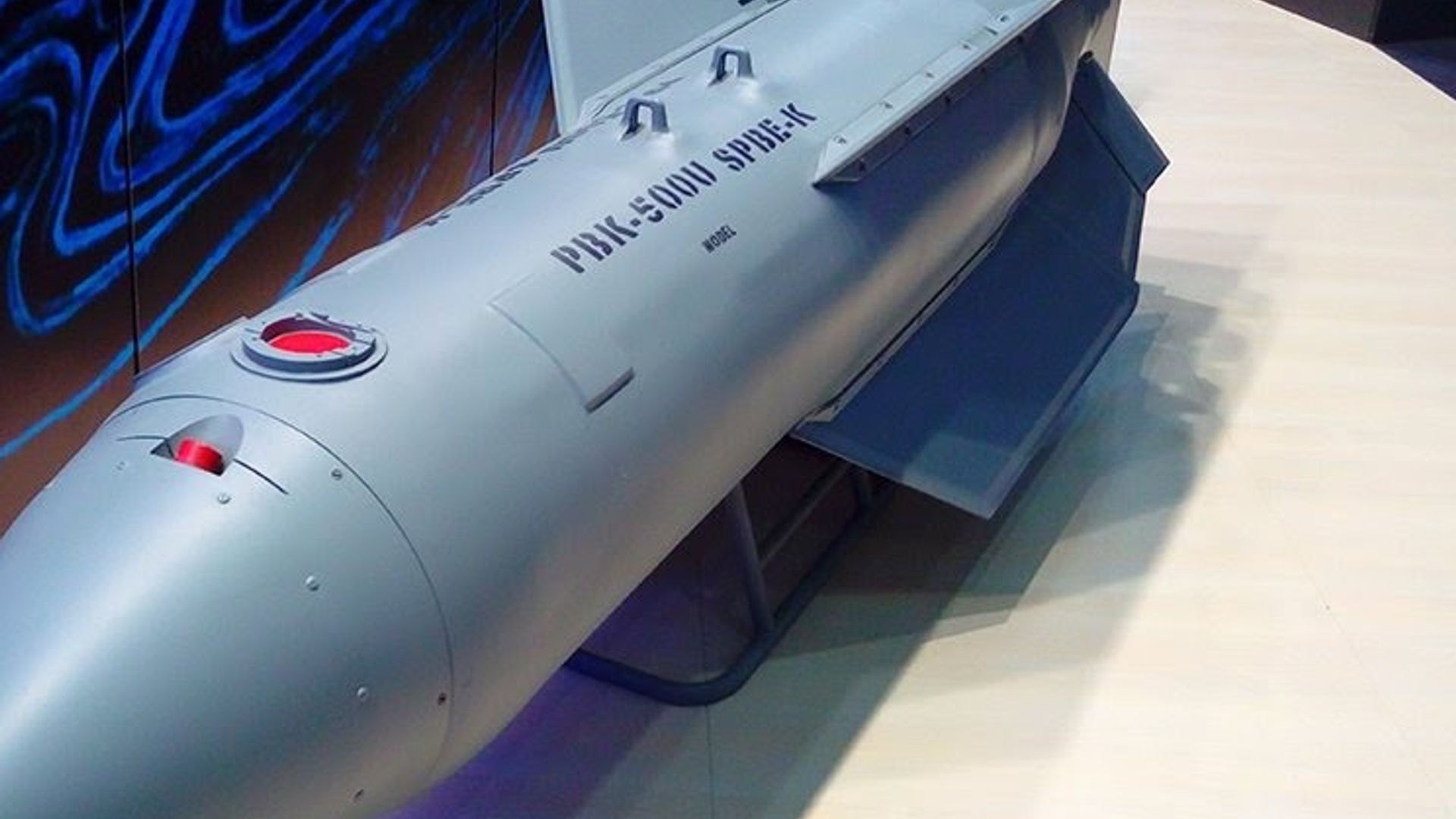
[RYAN ROBERTSON]
RUSSIA SAYS IT’S GOING TO MASS PRODUCE A NEW TYPE OF CLUSTER BOMB THAT’S SUPPOSEDLY INVISIBLE TO RADAR. RUSSIAN STATE MEDIA REPORTS THE DREL, OR DRILL IN RUSSIAN, IS A NEW TYPE OF GLIDE BOMB MADE BY THE STATE-OWNED ROSTEC DEFENSE CONGLOMERATE.
DRELS ARE SOME OF RUSSIA’S NEWEST WEAPONS, SO THERE ISN’T A LOT OF PUBLICLY AVAILABLE DETAILS ON THEM. BUT THEY ARE AERIAL BOMBS, SO THEY’LL NEED SOME SORT OF DELIVERY SYSTEM. LIKE STRAPPED TO THE BELLY OF A BOMBER. THE RUSSIAN GOVERNMENT SAYS THE DREL ACHIEVES INDEPENDENT GLIDED FLIGHT BY USING DEPLOYABLE WINGS.
THE UNITED STATES MAKES USE OF SIMILAR TECH WITH GROUND LAUNCHED, SMALL DIAMETER BOMBS. UKRAINE GOT SOME GLSDBs FROM THE U.S. WE REPORTED ON THAT TECH A COUPLE TIMES LAST YEAR, YOU CAN CHECK OUT THE STORIES AT SAN.COM IF YOU WANT MORE INFO.
BACK TO RUSSIA, WHERE THE KREMLIN SAYS ITS NEW GLIDE BOMBS ARE ALSO RESISTANT TO RADIO JAMMING AND CAN AVOID RADAR DETECTION, MAKING THE WEAPONS MORE DIFFICULT TO DESTROY IF TRUE. RUSSIA SAYS THE DREL IS ALSO A CLUSTER MUNITION AS WELL. SO, INSTEAD OF CREATING A SINGLE EXPLOSION WHEN IT DETONATES THE DREL RELEASES SMALLER EXPLOSIVE DEVICES CALLED BOMBLETS ABOVE ITS TARGET. THOSE BOMBLETS ARE TYPICALLY SPREAD ACROSS A WIDE AREA, KILLING OR DAMAGING ANYTHING OR ANYONE CLOSE ENOUGH TO THE DETONATIONS.
NOT EVERY BOMBLET ALWAYS EXPLODES, THOUGH, WHICH MEANS THE UNDETONATED ORDINANCE POSES A THREAT FOR YEARS TO COME. TO BOTH SOLDIERS AND CIVILIANS ALIKE. THAT’S WHY CLUSTER BOMBS ARE BANNED BY MORE THAN 100 COUNTRIES. SO WHY DO THE U.S., UKRAINE, AND RUSSIA, STILL USE THEM? IN ESSENCE, BECAUSE THEY’RE GOOD AT WHAT THEY DO.
WHEN TROOPS AND EQUIPMENT ARE IN THE OPEN, A HANDFUL OF CLUSTER MUNITIONS FLINGING POTENTIALLY HUNDREDS OF BOMBLETS CAN TAKE OUT LARGE NUMBERS OF TROOPS, EQUIPMENT AND LIGHTLY ARMORED VEHICLES ALL WITHOUT LEAVING MASSIVE CRATERS OR DESTROYING ENTIRE BUILDINGS. THE UNITED STATES MILITARY SAYS IT LIMITS THE USE OF CLUSTER MUNITIONS TO MILITARY TARGETS. THERE’S PLENTY OF EVIDENCE, THOUGH, SHOWING RUSSIA DOESN’T HOLD ITSELF TO THE SAME STANDARD.
AND WHILE CRITICS OF CLUSTER MUNITIONS SAY THE U.S. SHOULDN’T BE SENDING ANY TO UKRAINE, THE UKRAINIAN MILITARY SAYS SEND US ALL YOU GOT. UKRAINE IS HEAVILY OUTMANNED AND OUTGUNNED BY RUSSIA. SO, THEY SEE CLUSTER MUNITIONS AS A GREAT EQUALIZER IN THE CONFLICT. UKRAINE USED A SMALL NUMBER OF ATACMS MISSILES CARRYING CLUSTER MUNITIONS TO TAKE OUT 14 ATTACK HELICOPTERS AT TWO DIFFERENT AIRFIELDS BACK IN OCTOBER.







